Basil Plant Care - A Beginners Guide to Blissful Basil
Welcome to the urban gardeners compendium for creating natural bliss for Basil. Basil plant care is not hard, however every gardener can have a moment or two when, “pesto chango”, trouble strikes. While frustrating, it can be a blessing in disguise, as the silver lining is often the opportunity for more knowledge and experience.
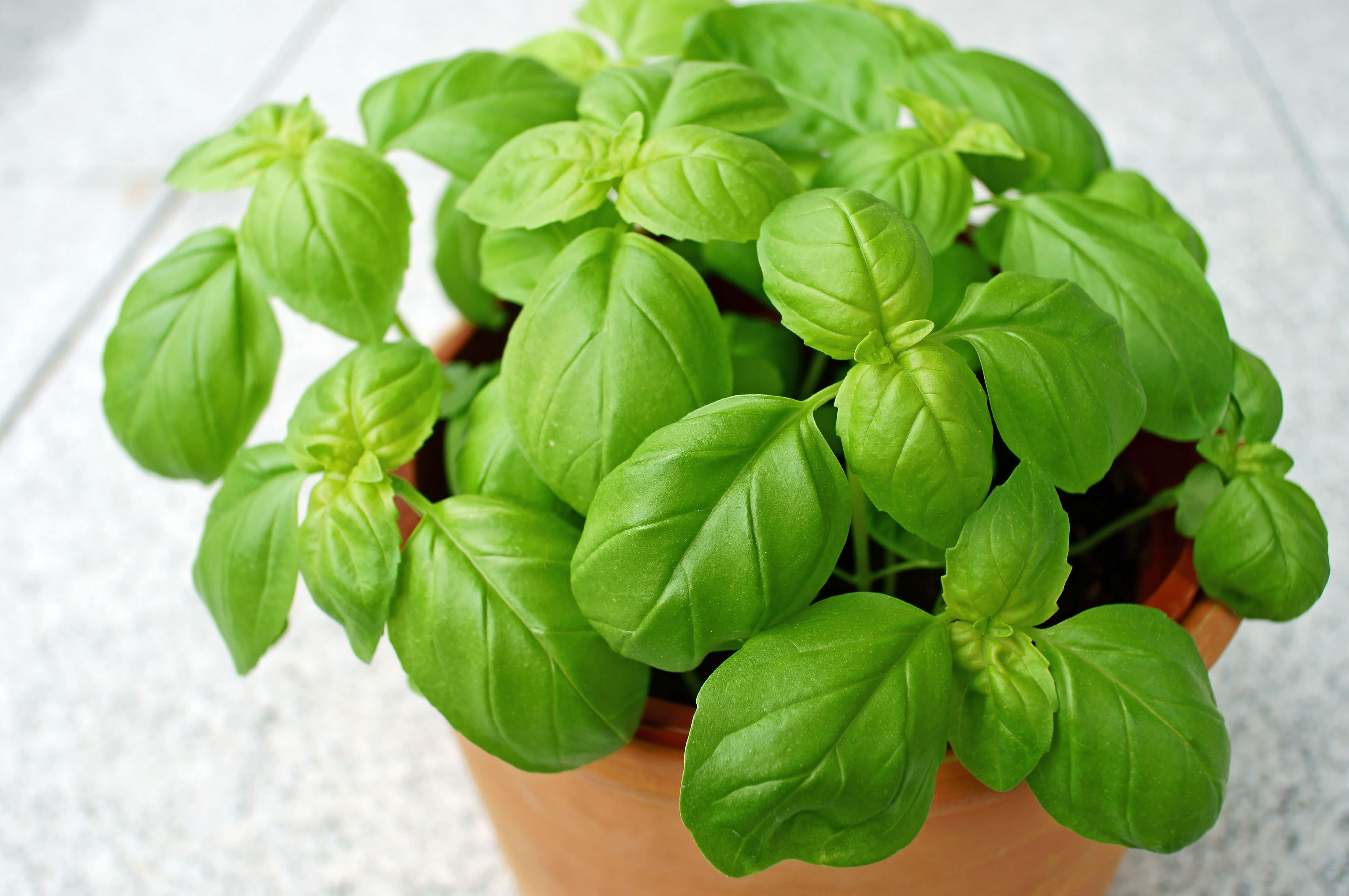
We will set the stage by going over the basics of Basil plant care, and then discuss the typical problems and what the causes are likely to be. Every plant needs soil, sun and a good soak but sometimes plants vary in what makes it “good”, “not enough”, or too much.
Well lets’ not beat around the Basil bush and get right to it shall we!
Who Is This Basil You Keep Talking About?
Readers let me introduce you to Basil, and Basil this is the Readers.
Basil is a delicious culinary and beneficial healing herb that people have grown in their homes and gardens for centuries. It’s one of the most common herbs you’ll find in any kitchen and is great for seasoning sauces, soups, salads, and a myriad of other delectable delights.
Who doesn’t love the refreshing flavour of fresh basil leaves lingering on your taste buds after a great supper? Many I would say by just how popular a herb it is to grow.
While we're keeping it simple, it's good to know a bit of the scientific stuff. Basil plants belong to the genus Ocimum and are part of the mint family, Lamiaceae. The most commonly grown species for culinary purposes is Ocimum basilicum.
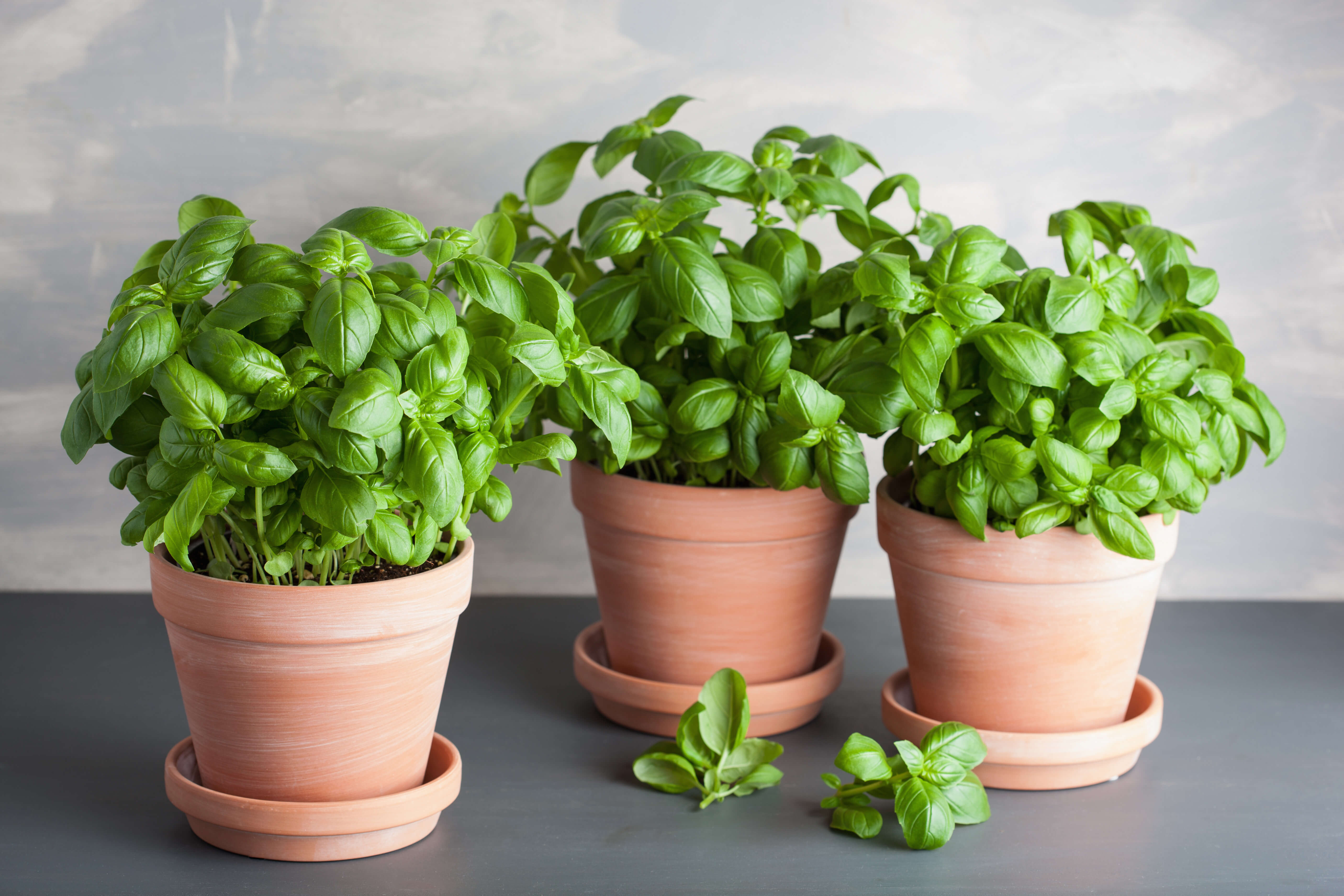
In simple terms, a basil plant is like the rockstar of the herb world – green, aromatic, and totally ready to spice up your life (and your recipes). Imagine a small, leafy green buddy that not only adds flavor to your favorite dishes but also brings a fresh and delightful fragrance to your living space.
Basil is that cool herb you might have seen in your pizza, pasta, or even in a refreshing summer drink. It's those vibrant green leaves with a distinct aroma that says, "Hey, I'm here to make things tastier!"
This herb is not just a kitchen superhero; it's also pretty easy to grow, especially if you're working with limited space. So, whether you're a seasoned chef or a kitchen newbie, having a basil plant around is like having your own culinary sidekick – ready to add a dash of flavor to your meals with minimal fuss.
Basil tastes great, smells wonderful, cheap and easy to grow - sounds like a winner of a herb to me!
Basil's Happy Home - Choosing the Right Container
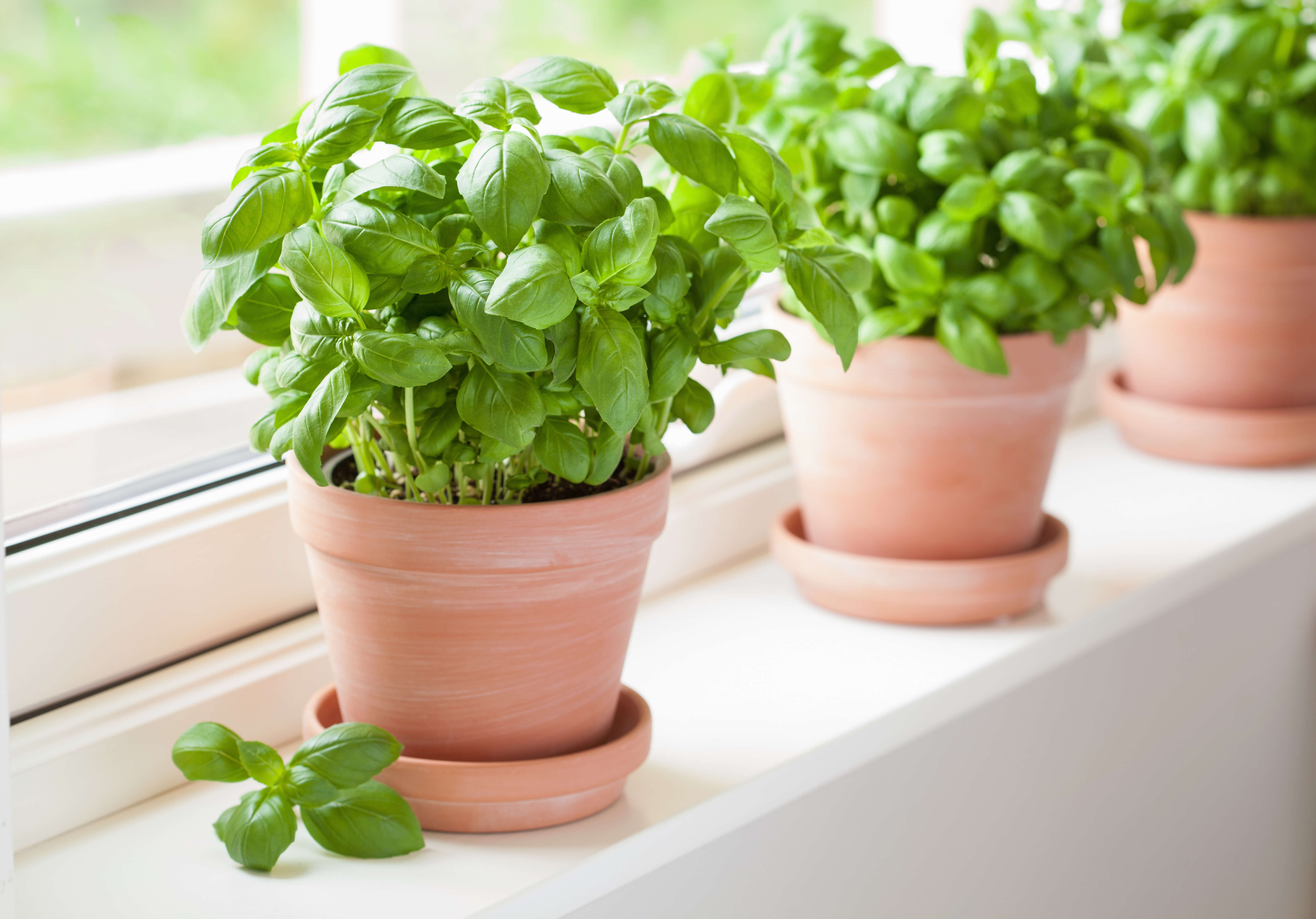
Choosing a home to maximize your Basil plant care is not a hard one. Basil is like an easy going friend who is happy to just crash on the couch (so long as it is a comfortable enough one). It doesn’t need tons of room and is just as happy in a one bedroom condo as a luxurious home.
Basically for Basil, any size container will do. Any type of container will do the trick as well. So it will be better to pick a container that fits the best location for access to light and where it will be easy to get to. Seriously though, don’t put your Basil plants on the couch. They much prefer a window sill.
If you want a lot of Basil, then pick a larger container, or multiple smaller containers that fit your best location for lots of light. As they say in the real estate world - “Location. Location, location”.
Do pick a container which has good drainage, and if it is indoors ofcourse, a saucer or some way to hold the excess water.
The Art Of Basil Planting
Growing Basil in containers helps in two ways: Reduce impact of soil based pests; Keeps the nutrients and water close to the roots.
To plant Basil from seed, you can either start the seeds in a starter kit with a grow light, and then plant the seedlings in the permanent container afterwards; or you can plant the seeds directly in the growing medium or soil in your permanent container. Ensure you use a loose or well draining soil.
Before planting, amend the soil with compost and fertilizer or buy the indoor potting soil with the compost already mixed in for best results. Plant the seeds 1/8 inch deep and thin to 3 to 4 inches apart after emergence. The Basil plants will germinate in 10-14 days. During the germination keep the soil damp or moist, but no so much water that the soil becomes very wet and dense. If you do overwater, don’t worry, just let it dry out a bit before watering again.
The best practice when it comes to growing basil seedlings is to water the plant every two days and ensure that the container system allows it to drain the water while marinating a good moisture level. Since basil seedlings are not fully developed and established, they can dry out more than actually established plants.
You can also buy from most garden centres Basil seedlings ready to plant. In which case, use the same potting soil, transplant it fairly deep (⅔ down) in the container and water a bit more in the first week to promote root growth, then cut back to a normal watering schedule of once a day.
Natural Fertilizer for Basil Plant Care
For the fertilizer, you can simply use dried tea leaves, or even mix in dried coffee grounds. Those are high in nitrogen. Mix them in with regular potting soil or compost. Go sparingly at first as too much can make the leaves turn yellow.
Another trick is to repurpose water used to boil potatoes, put it aside and use that to water your Basil plants.
If you are looking for a traditional store bought natural fertilizer, look for one which contains Blood Meal or Cottonseed meal.
Sun, Sun, Sun - Basil’s Best Friend
For container gardening Basil, access to sunlight is critical. Basil more than loves the sun, it worships the sun. Find the sunniest spot for your Basil plants and watch them reward your kindness with an abundance of Basil.
Too much sun only requires additional watering to keep your Basil happy and healthy.
Watering Wisdom - Keeping Basil Hydrated
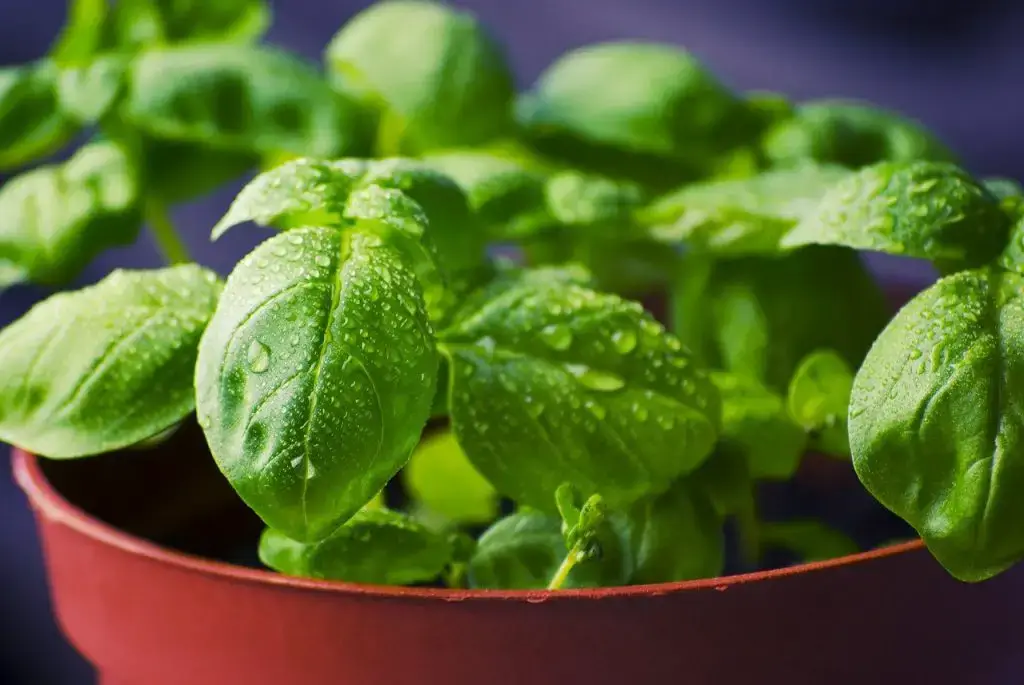
It’s important to make sure your basil plants are watered thoroughly. When they are kept indoors, a weekly watering is sufficient. However, once you place them outside you may have to water them more frequently to keep them healthy - every 4 to 5 days is typical. Usually basil plants will require one inch of water a week for Basil in a container.
If it is particularly sunny or warm where they are located, you will need to check the moisture in the soil regularly to make sure they do not get dried out. They may need more water when they have more than 6-8 hours of sun a day.
An easy way to check the moisture level of the soil is to stick your finger in the soil about an inch or even the second knuckle from your finger nail. When you pull out your finger if there is soil that attaches itself to the finger then it is likely moist enough. If you finger is dry, time to add some water!
On the flip side, adding too much much water is not good. Water-logged soil can starve the Basil plant of oxygen - just like us, plants need oxygen to survive. Over-wet soil can also increase the changes of fungus and lead to root rot.
Urban Tip: If your city water is heavily chlorinated, then you should fill a water can with water and let it sit overnight before watering your plants. This will allow the chlorine in the water to evaporate before you water the plants.
Common Basil Conundrums - A Troubleshooting Guide
Even though Basil is one of the easier plants to grow, it does not mean it is immune to trouble. Here are some of the more typical symptoms to allow you to try to play doctor with your Basil, and who better? When you love your Basil, it loves you back…once it is well again.
Fear not though, even the best doctors have their bad days. Necessarily not for plants, but happily for you, learning is part of the journey!
Wilting and Drooping

When you first notice wilting or drooping, you want to evaluate the basil’s watering schedule along with ensuring the proper amount of sun exposure and soil. Basil must have the similar conditions as its native Mediterranean habitat in order for it to thrive.
Whenever you notice your basil wilting, always first check the three main areas: light, soil and water.
If it’s mature, it should get six to eight hours of full sun every day. Anything more, or less, may cause your basil to wilt. This includes too much shade.
Overwatering, including humidity, is sure to affect the basil and root rot. When the environment is very hot and humid, put mulch around the base of the plant to retain moisture. Because basil should be in well-draining, keep potted basil on a rack without a drainage dish underneath. Allow it to sit an inch or two above the drainage collection. This way, effluence shouldn’t be a problem when humidity is uncontrollable.
Pro Tip: Always check the moisture level in the soil before you water!
If moist soil is a serious concern, try keeping a small oscillating fan in the vicinity to ensure proper airflow, absorption and drainage. If the basil is still wilting with balanced soil, then it could have already developed root rot or there’s fungal disease.
If your potted basil has a spot next to a laptop, tablet, personal computer, mobile device or Wi-Fi router, the EMFs (or electromagnetic frequency waves) could be damaging the plant and preventing its growth, thereby making basil wilt.
Cold Temperatures
If you live in a colder climate, the basil could be too cold. While indoors for the winter, be sure to give the plant a grow light and that it stay out of the direct path of drafts and breezes. So, it’s not a good idea to keep it next to a window or where there’s traffic in and out of the area it sits.
For basil plant care outside, pay attention to weather and severe changes in temperature. It can survive a little bit of frost, but, if you know it’s going to drop below freezing, harvest what you can. It will not tolerate anything under 32F for too long. There is no saving it unfortunately.
Basil Leaves Turning Yellow?
When there’s a curl effect on the the leaves with yellowish discoloration, there are several factors that could be causing this:
- Water – Water your basil plant on a regular basis but be sparing with it. Too much or too little water will cause the leaves to curl and turn yellow.
- Disease – Aside from Downy Mildew, Fusarium is another fungal disease that can cause brownish, distorted leaves.
- Infestation – Bugs and insects are often the cause of curling leaves with a yellowish discolouration.
- Sunlight – If the basil isn’t receiving at least six hours of direct light during warmer months and 10 hours in the winter, it will develop a yellowed curling around the leaves.
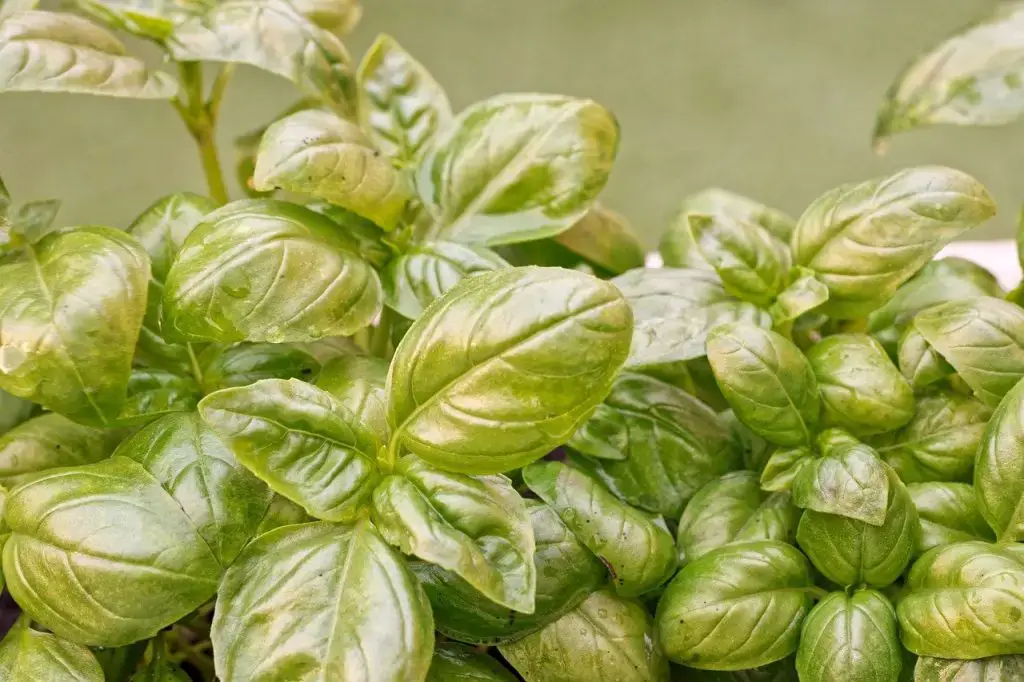
Hydroponic Basil issues are a little different than in the garden or a pot. This indicates a nutrition deficiency called “interveinal chlorosis.” This means all parts of the leaf, except the veins, is yellowing because it lacks things like iron and magnesium.
You can harvest yellow basil leaves and use them for your cooking and healing purposes. You just want to make sure that the yellowing comes from problems like light and watering rather than pests and disease. If the latter is the case, avoid consuming the leaves.
Basil Leaves Turning Brown?
There are a number of reasons that your basil could be turning brown.
Firstly, your basil could be underwatered. If you are not watering enough, the basil could begin to dry out. Make sure you are watering your basil on a regular schedule instead of just whenever you remember or it is convenient. This will allow your herb to have a constant intake of water on a consistent basis, keeping it happy, healthy, and green.
You might be wondering how you can manage this delicate balance of overwatering vs. underwatering. Luckily for you, there is an easy way to make sure that you are doing neither. Simply wait for the first one to two inches of the soil your basil is planted in to dry. That is when you’ll know your basil could use a little bit of water.
The other major reason that your potted basil turns brown is a lack of sunlight. Basil needs at least six hours of direct sunlight every day, or else the plant will begin to die.
If your basil is outdoors, make sure it isn’t under a tree or in some other source of shade that will block it from full sunlight for more than six hours. On the other hand, if your basil is indoors, try to pick a window that will allow for six hours or more of direct sunlight every day. Windows that face to the south often work very well for this.
This is a much easier thing to fix, as you can simply set it up where it needs to be and never worry about it again. That being said, make sure it’s getting proper sunlight every once and a while by double-checking during hours there should be sunlight on it that there actually is!
Basil Leaves Getting White Spots?
If you are getting white spots on your Basil leaves, then you may be having an infestation problem. This is not the same thing as the leaves turning pale white.
If the leaves are going a pale white, it is likely the same as if the "Basil Leaves Turning Yellow?" up above, it has just gotten to the point where it is likely so pale it looks white.
If the leave have white spots, then check for infestation - check out our detailed page for more information:
White Spots On Basil Leaves (Why It Happens & What To Do)
Basil’s BFFs - Other Herbs For Container Gardening
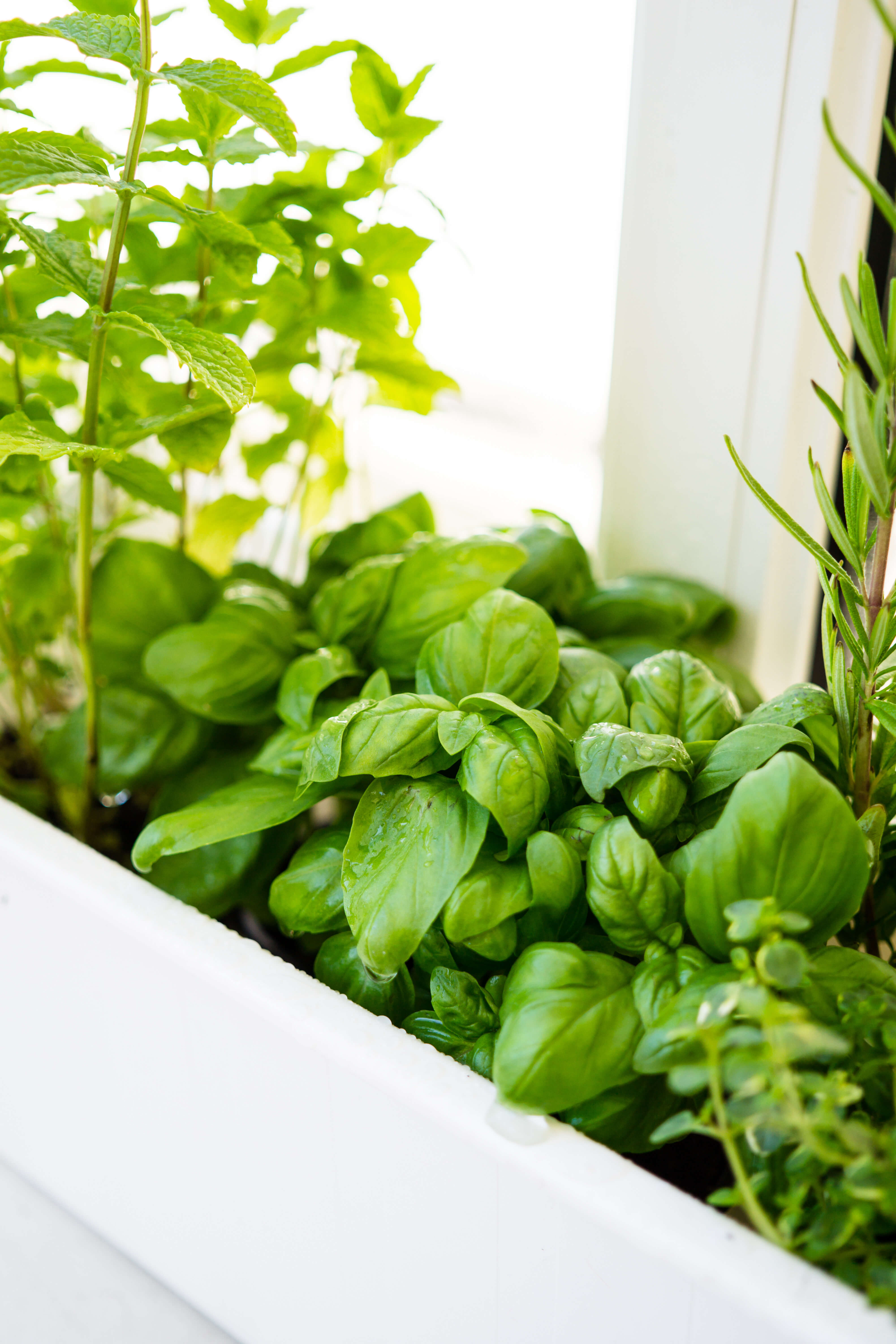
For container gardening, finding the right companion plant to go alongside Basil in the same container can be like a gardening windfall! Two plants, one container, where’s the downside? Well if you pick a herb or plant that Basil gets along with, absolutely no downsides!
First of all you need to make sure the container is large enough - even two good friends can’t share a one bedroom apartment for too long.
Second, pick a friend who shares similar living habits and likes the same living conditions. Fighting over the heat controls and curtains isn’t fun for humans, and the same is true for plants.
Here is a list of other herbs which go very well with Basil in containers, either indoor or outdoor:
Chives:
- Chives and basil make a great team. Chives have a mild onion flavor and can be a wonderful addition to your culinary endeavors.
Mint:
- Mint and basil are both members of the mint family (Lamiaceae). While mint can be invasive, growing it in a container alongside basil can be a good way to control its spread.
Oregano:
- Another member of the mint family, oregano, complements basil well. Both herbs share similar growing conditions and can be grown together for a flavorful herb combo.
Tomatoes:
- Basil and tomatoes are like the dynamic duo of the garden. Basil can enhance the flavor of tomatoes and may even help protect them from certain pests.
Thyme:
- Thyme is a low-maintenance herb that pairs nicely with basil. It adds a different flavor profile and can be a great addition to your herb garden. Basil can outgrow it though, so you will need to trim the Basil back more often.
If flowers are more your thing:
Marigolds:
- Marigolds are known for their pest-repelling properties. Planting them near basil can help keep unwanted insects away.
Nasturtium:
- Nasturtiums not only add a pop of color to your garden but can also act as a natural pest deterrent, making them a good companion for basil.
Other Resources:
Best way to store basil
Curious about how to store you Basil, and keep it fresh for as long as possible?
Check out this article: The Best Way To Store Basil (Spruce Eats)
Basil and High Frequency Electromagnetic Fields
How does High Frequency Electromagnetic Fields affect plants and herbs? Find out with this article from the “National Center for Biotechnology Information - National Library of Medicine” article entitled “Plant Responses to High Frequency Electromagnetic Fields” with this link: Plant Responses To HFEF
HOME > Container Gardening For Herbs > Best Herbs For Container Gardens (This page)